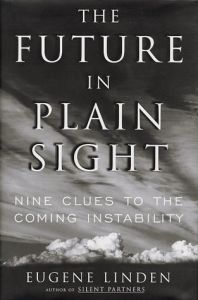Join getAbstract to access the summary!

Join getAbstract to access the summary!
Eugene Linden
The Future in Plain Sight
Nine Clues to the Coming Instability
Simon & Schuster, 1998
What's inside?
Take to the lifeboats! The dangers of disease, pestilence, rotting cities, and social unrest in the twenty-first century.
Recommendation
Eugene Linden explains that most of civilization’s history has included long periods of remarkable stability, including the last few decades. However, stability is not the norm and indications show it is ending. Thanks to overpopulation, technological change and environmental degradation, profound instability is likely in this century. The clues to future instability are in plain sight. You can see them when you compare what has happened in the past to what is likely to happen in the future. In the first half of this book, Linden makes a persuasive case for some of his basic predictions, though he is definitely a pessimist. The scenarios in the second half of the book, intended to illustrate what will happen if these predictions come true, are really speculative fiction masquerading as futurology. Still, Linden’s basic premise is sound and his warnings should be taken seriously. getAbstract recommends the book to those involved in long-range business planning and trend research.
Summary
About the Author
Eugene Linden is a science writer and has contributed to many major magazines and newspapers, including The New York Times and The Wall Street Journal. He is the author of Silent Partners, which The New York Times cited as a notable book in 1986. He is a frequent guest on radio and television programs in the U.S.

















Comment on this summary